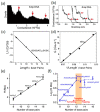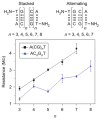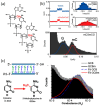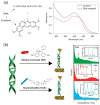DNA-Based Single-Molecule Electronics: From Concept to Function
- PMID: 29342091
- PMCID: PMC5872094
- DOI: 10.3390/jfb9010008
DNA-Based Single-Molecule Electronics: From Concept to Function
Abstract
Beyond being the repository of genetic information, DNA is playing an increasingly important role as a building block for molecular electronics. Its inherent structural and molecular recognition properties render it a leading candidate for molecular electronics applications. The structural stability, diversity and programmability of DNA provide overwhelming freedom for the design and fabrication of molecular-scale devices. In the past two decades DNA has therefore attracted inordinate amounts of attention in molecular electronics. This review gives a brief survey of recent experimental progress in DNA-based single-molecule electronics with special focus on single-molecule conductance and I-V characteristics of individual DNA molecules. Existing challenges and exciting future opportunities are also discussed.
Keywords: DNA; I–V characteristics; charge transport; molecular electronics; molecular junctions; single-molecule conductance.
Conflict of interest statement
The author declares no conflict of interest.
Figures






















References
Publication types
LinkOut - more resources
Full Text Sources
Other Literature Sources
Miscellaneous

